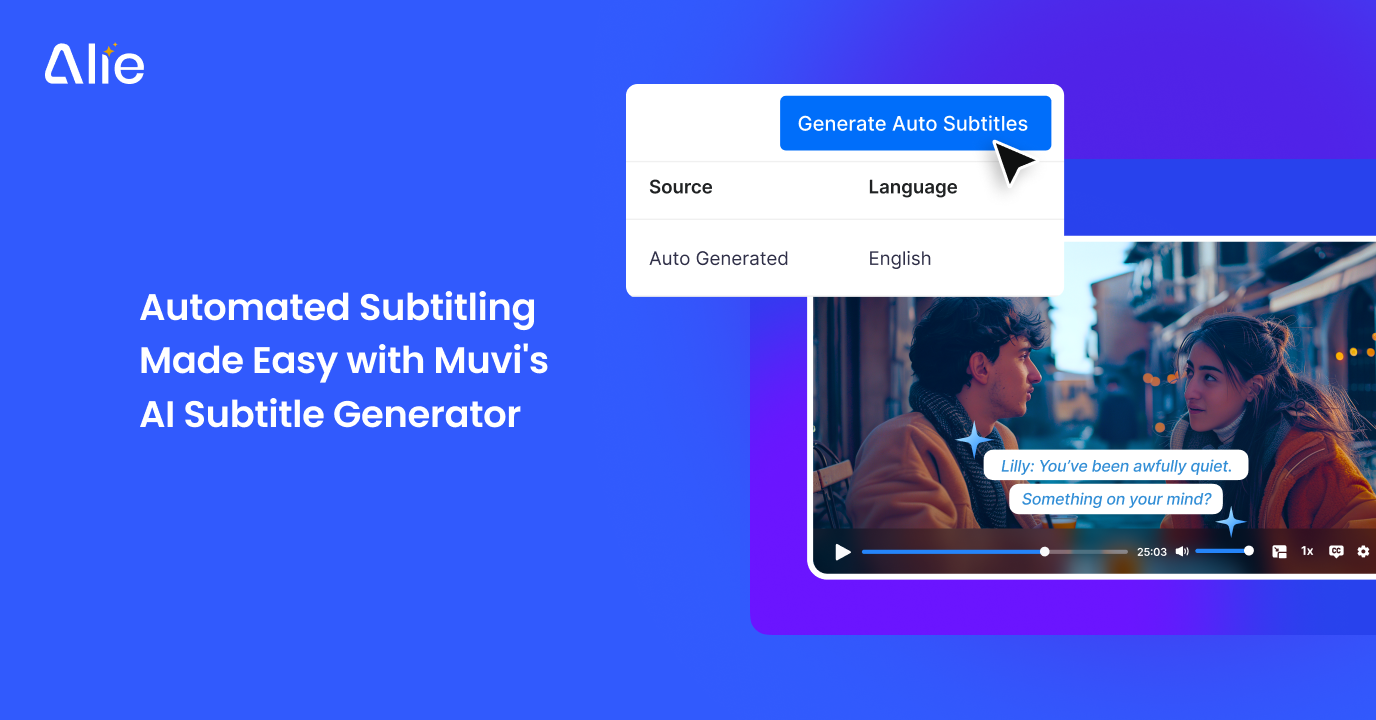Video CDNs play a crucial role in streaming businesses. In the relentless race to capture the ever-expanding digital audience, streaming businesses face a pivotal question: how can we deliver top-tier video content without exhausting their financial resources?
The answer lies in the very backbone of your operation – the Content Delivery Network, or CDN.
The world of streaming, driven by platforms ranging from on-demand entertainment to live sports broadcasts and video conferencing, has evolved dramatically. The demand for high-definition video content is relentless, and the costs associated with meeting this demand are significant.
However, with the right video CDN strategy in place, you can strike a balance between delivering exceptional content and optimizing your expenditure.
This blog explores the transformative power of a robust Video CDN for the streaming businesses. It delves into the intricacies of how an efficient CDN can be a cost-cutting ally, addressing the concerns of streaming service providers and content creators alike.
We’ll uncover the ways in which a well-structured CDN optimizes bandwidth utilization, enhances scalability, and fortifies security – all while mitigating the financial strain.
So, let’s get started!
What Is a Video CDN?
A Video Content Delivery Network (CDN), commonly known as a Video CDN, is a specialized infrastructure designed to efficiently distribute and deliver video content over the internet. It is a crucial component in the modern digital landscape, facilitating the seamless streaming of video content to a global audience.
At its core, a Video CDN is a geographically dispersed network of servers strategically positioned in data centers worldwide. These servers work in tandem to store, cache, and deliver video files to end-users with the utmost speed, reliability, and quality.
Video CDN in Cost Cutting: How It Helps?
In the fiercely competitive landscape of streaming businesses, the pursuit of cost-efficient operations while delivering top-tier video content is a constant challenge. The answer to this conundrum often lies in embracing cutting-edge technology, and one such technology that has emerged as a cost-saving ally is the Video Content Delivery Network (CDN).
Now let’s explore how a robust Video CDN hosting can be a game-changer for streaming businesses, delivering cost-saving benefits through lower bandwidth costs and cost-efficient scalability.
1. Lower Bandwidth Costs
Bandwidth consumption stands as a monumental expense for streaming businesses. Every minute of high-definition video streamed to viewers incurs costs, with the potential to spiral out of control as the audience grows. This is where a Video CDN plays a pivotal role in reducing bandwidth costs.
A Video CDN accomplishes bandwidth cost reduction through several key mechanisms:
- Caching: One of the primary functions of a Video CDN is to cache video content. When a video is requested, the CDN serves it from a server closest to the viewer, reducing the need to transmit data across long distances. This reduces the amount of data transmitted through expensive internet backbone connections.
- Content Compression: Video CDNs often employ advanced compression techniques to minimize the size of video files without compromising quality. This reduces the volume of data that needs to be transmitted, resulting in significant bandwidth savings.
- Content Delivery Optimization: CDNs optimize the delivery of content by selecting the most efficient network routes, further reducing the distance data travels and, consequently, lowering bandwidth usage.
- Adaptive Bitrate Streaming: Video CDNs support adaptive streaming, which adjusts the video quality in real-time based on the viewer’s internet connection. This not only enhances the viewer experience but also optimizes bandwidth consumption by serving the highest quality the viewer’s connection can handle.
- Persistent Connections: CDNs often maintain persistent connections with end-users, allowing them to efficiently deliver multiple video segments without the overhead of establishing a new connection for each request. This minimizes the bandwidth needed for connection setup.
By effectively implementing these bandwidth optimization strategies, a Video CDN substantially reduces the data transfer expenses for streaming businesses. The result is a more predictable and manageable cost structure, even as the viewer base expands.
2. Cost-Efficient Scalability
The ability to scale infrastructure seamlessly in response to fluctuating viewer demand is a hallmark of a successful streaming service. Traditional approaches to scalability, involving the provisioning of additional servers and infrastructure, can be prohibitively costly. Video CDNs provide an elegant and cost-efficient alternative.
Here’s how a Video CDN helps in cost-efficient scalability:
- Global Network Infrastructure: Video CDNs operate on a global scale, with a network of strategically located servers. When viewer demand surges in a particular region, the CDN can quickly respond by serving content from the nearest server. This dynamic load balancing ensures that additional infrastructure is only deployed where and when it’s needed.
- Instantaneous Scaling: Traditional infrastructure scaling can be time-consuming and expensive. Video CDNs, on the other hand, allow streaming businesses to scale almost instantly by utilizing the existing CDN infrastructure. This eliminates the need for capital-intensive investments in new servers and data centers.
- Resource Sharing: CDNs are shared resources, meaning multiple content providers can utilize the same infrastructure. This shared model reduces costs for individual streaming businesses, as they only pay for the resources they consume, rather than investing in dedicated infrastructure.
- No Capital Expenditure: With a Video CDN, there’s no need for significant upfront capital expenditure to build and maintain a vast network of servers. This shift from capital-intensive to operational expenditure enables streaming businesses to allocate resources more efficiently and adapt to changing market conditions.
- Pay-as-You-Grow Model: Most Video CDN providers offer a pay-as-you-grow pricing model. As a streaming business expands its viewership, it pays for the additional resources and bandwidth it consumes. This cost structure aligns with revenue generation, making it a financially prudent approach to scalability.
3. Improved Resource Utilization
A Video CDN not only reduces costs but also enhances resource utilization by optimizing the distribution of video content to viewers.
- Efficient Server Usage: Video CDNs maintain a network of servers distributed across various geographical locations. By serving video content from servers closest to viewers, CDNs ensure that each server is utilized efficiently. This reduces the risk of overloading individual servers and ensures that resources are allocated optimally.
- Real-Time Resource Allocation: Video CDNs are designed to dynamically allocate resources based on current demand. When viewer traffic surges, the CDN allocates additional resources to meet the increased demand. Conversely, during periods of lower demand, resources are scaled down to prevent overprovisioning and unnecessary costs.
Also, CDNs provide seamless scalability, allowing streaming businesses to expand their resources as needed without the complexity and cost associated with provisioning and maintaining additional infrastructure. This elasticity ensures that resources are aligned with the evolving requirements of the business.

4. Affordable Global Delivery
Reaching a global audience is the ultimate aspiration for streaming businesses. However, the inherent challenge lies in delivering high-quality video content to viewers across the globe in a cost-effective manner.
This is where a robust Video Content Delivery Network (CDN) steps in, offering affordable global delivery capabilities that enable streaming businesses to expand their reach without breaking the bank.
- Global Server Network: Video CDNs maintain a network of strategically positioned servers in data centers around the world. These servers act as local points of presence (PoPs) that are in proximity to viewers. When a user requests video content, the CDN serves it from the nearest PoP, minimizing the distance data needs to travel. This not only reduces latency and improves the viewer experience but also decreases the costs associated with transmitting data over long distances.
- Reduced Transit Costs: Transmitting data across the vast expanse of the internet often incurs transit costs, which can add up significantly for streaming businesses. By leveraging a Video CDN, content providers can reduce transit costs as the CDN’s infrastructure optimizes the most efficient routes for data delivery. This cost reduction becomes especially pronounced when serving a global audience, as CDNs excel in finding the most economical paths.
- Edge Caching: One of the hallmark features of a Video CDN is edge caching. Popular video content is cached on CDN servers at the edge of the network, close to viewers. This eliminates the need to retrieve the same content repeatedly from the origin server, reducing bandwidth and data transfer costs. Edge caching also enhances the speed of content delivery, ensuring viewers experience minimal buffering.
5. Efficient Traffic Management
In the fast-paced world of streaming businesses, efficient traffic management is essential for delivering a seamless viewing experience to a global audience while keeping operational costs in check.
A robust Video Content Delivery Network (CDN) is the linchpin of this efficiency, offering sophisticated traffic management capabilities that optimize content delivery and resource utilization.
- Dynamic Routing: CDNs use dynamic routing algorithms to select the most efficient network paths for data delivery. This minimizes the distance data travels and reduces transit costs, contributing to cost-efficient traffic management. Dynamic routing also enhances the reliability and resilience of content delivery.
- Adaptive Bitrate Streaming: Video CDNs support adaptive streaming, a technology that adjusts the quality of video in real-time based on the viewer’s internet connection. By serving the highest quality video that the viewer’s connection can handle, CDNs optimize bandwidth usage and traffic management, especially for viewers with varying network conditions.
- Global Scalability: The global reach of Video CDNs allows streaming businesses to scale resources efficiently in response to fluctuations in viewer demand. Whether it’s serving a local audience or a global viewership, CDNs can instantly allocate resources where and when they are needed, optimizing traffic management.
6. Reduced Operational Expenditure
In the highly competitive landscape of streaming businesses, efficient cost management is essential for long-term sustainability and profitability. A powerful ally in this endeavor is the implementation of a robust Video Content Delivery Network (CDN), which significantly contributes to reducing operational expenditure and ensuring a healthy bottom line.
- Infrastructure Sharing: CDNs operate on a shared model, where multiple content providers utilize the same infrastructure. This eliminates the need for individual businesses to invest in dedicated servers and data centers, significantly reducing capital expenditure. The cost of maintaining and expanding infrastructure is distributed among the CDN’s user base, further enhancing cost-effectiveness.
- Instant Scalability: Traditional infrastructure scaling often involves significant lead times and capital investment. Video CDNs, on the other hand, provide instantaneous scalability by leveraging the existing CDN infrastructure. Streaming businesses can scale their resources up or down in real-time based on viewer demand. This elasticity ensures that resources are allocated efficiently and cost-effectively, without the need for extensive capital expenditure.
- Predictable Cost Structure: Many Video CDN providers offer pay-as-you-grow pricing models. As streaming businesses expand their viewership, they pay for the additional resources and bandwidth they consume. This predictable cost structure aligns with revenue generation, ensuring that costs remain proportional to business growth. It eliminates the uncertainty of unpredictable infrastructure costs.
The Bottom Line
In the multifaceted realm of streaming businesses, selecting the right Content Delivery Network transcends the singular pursuit of cost reduction. Beyond the crucial aim of financial efficiency, a well-chosen CDN is instrumental in empowering streaming businesses to excel in a competitive landscape where viewer demands are constantly evolving.
Muvi One‘s scalable CDN feature not only aligns with your goals of efficient cost management but also enhances global reach, performance, and security. Moreover, it offers a comprehensive suite of competitive features such as SEO and audience engagement tools, seamless integration, multi-DRM security, metadata management, and more.
With Muvi One, you can streamline content delivery, optimize viewer experiences, and safeguard valuable content, all while staying agile and future-proof in the dynamic world of streaming businesses.
Take a 14-day free trial today to start streaming with Muvi One (no credit card needed)!

FAQs
- What is a Video CDN, and why is it important for streaming businesses?
A Video CDN (Content Delivery Network) is a network of servers designed to efficiently deliver video content to end-users. It’s vital for streaming businesses as it optimizes video delivery, reduces latency, and ensures a seamless viewing experience, enhancing viewer satisfaction and retention.
- How does a Video CDN reduce bandwidth costs for streaming businesses?
A Video CDN reduces bandwidth costs by distributing content through a network of servers, minimizing the load on a single origin server. This reduces data transfer costs and prevents the need for excessive server capacity, saving streaming businesses money.
- What role does content compression play in cost-cutting with Video CDNs?
Content compression is crucial for cost-cutting with Video CDNs because it reduces the size of video files before distribution. Smaller files require less bandwidth and storage space, resulting in lower data transfer costs and improved streaming efficiency.
- How does a Video CDN enable cost-efficient scalability?
Video CDNs enable cost-efficient scalability by leveraging a distributed network of servers. As demand for content increases, the CDN can dynamically scale to handle traffic spikes without the need for significant infrastructure investments, ensuring cost-effective growth.
- How does a Video CDN improve resource utilization?
Video CDNs enhance resource utilization by strategically caching and delivering content from servers closest to end-users. This reduces the load on origin servers, minimizing the need for additional hardware and infrastructure, thus optimizing resource allocation and cost savings.

















Add your comment